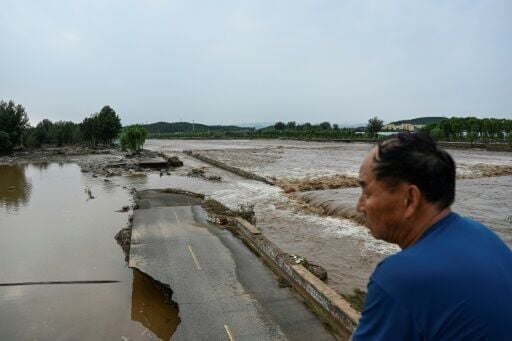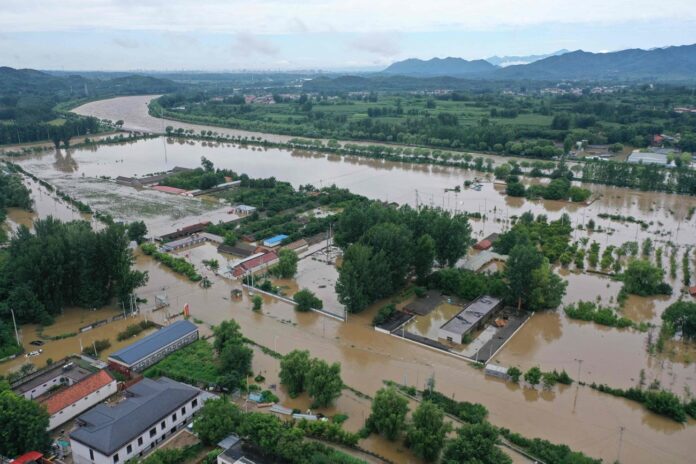Northern China has faced severe flooding after days of relentless heavy rain, causing the deaths of at least 30 people and forcing the evacuation of more than 80,000 residents. The downpours hit Beijing and its mountainous northern districts especially hard, with Miyun district reporting 28 fatalities and Yanqing two.
Flash floods and landslides disrupted roads, power supplies, and communications, leaving many communities cut off as emergency services launched all-out rescue efforts under orders from President Xi Jinping. The capital’s meteorological authorities issued their highest-level rainstorm warning, anticipating over 300 millimeters of rain overnight in some areas .
The flooding also extended into surrounding regions like Hebei province, where a landslide killed four people and left eight missing. In response, China’s National Development and Reform Commission injected emergency funds to aid relief operations, while local governments evacuated thousands to safer locations. The Miyun Reservoir, a critical water source for Beijing, reached record water flow rates unseen since 1951.

Many villages faced power cuts, and vital transport routes were submerged or damaged. Authorities have closed schools, suspended non-essential businesses, and urged residents to remain indoors amid ongoing heavy rain forecasts and a deteriorating weather situation linked to the East Asian monsoon .
Emergency Actions and Challenges
President Xi emphasized the urgency of rescue missions, instructing authorities to spare no effort in locating missing persons and relocating those at risk. Beijing activated its top flood emergency response level on Monday evening, warning that floodwaters could rise rapidly and ordering businesses and schools to cease operations temporarily.
Such measures are critical given the rapid spread of flash floods and the difficulty rescuers face navigating cut-off mountain villages. State media footage depicted floodwaters sweeping away parked cars and turning urban streets into rivers, underscoring the intensity of the disaster.
The widespread impact of the flooding exposes vulnerabilities in infrastructure and disaster preparedness, especially considering that Beijing and nearby provinces faced devastating floods last year with high casualties. These events raise concerns about the long-term ability of aging flood control systems to cope with increasingly intense rainfall.
Scientists have linked the rise in extreme precipitation to climate changes affecting the East Asian monsoon, suggesting that cities in northern China may face growing flood risks going forward. This adds pressure on local authorities to improve resilience and emergency response capabilities.
Personal Analysis
This flooding highlights how quickly natural disasters can overwhelm urban and rural communities alike, especially in areas not accustomed to such heavy rainfall. The speed and scale of evacuations reflect steps taken to protect lives but also reveal challenges in logistics when critical infrastructure is compromised. The record water levels recorded at Miyun Reservoir emphasize how existing water management systems are being tested beyond their limits.
Furthermore, the ongoing presence of tropical monsoon influences on northern China’s unusually heavy rains points to a changing climate pattern that could bring more frequent and severe floods. This requires a sustained focus on upgrading flood control measures, improving early warning systems, and adopting community-based disaster preparedness strategies. China’s rapid urbanization and high population density only increase the stakes when severe weather strikes.
Sources: earth.org


